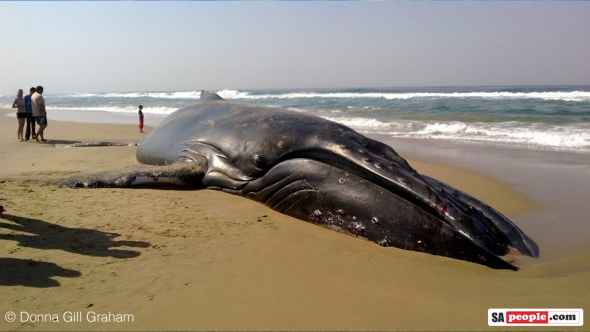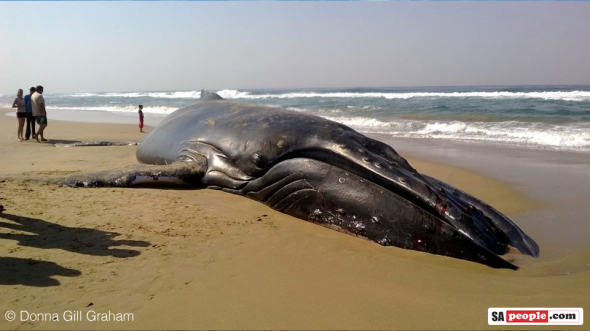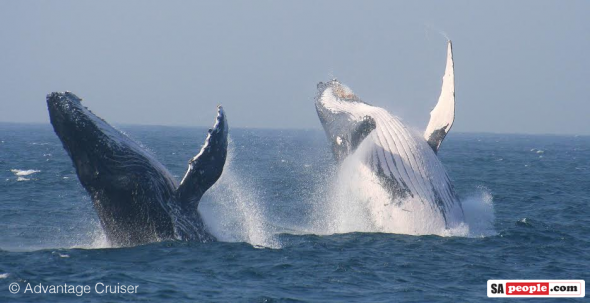
Beached Whale at Amanzimtoti
The sad sight of a dead humpback whale drew crowds to an Amanzimtoti beach on Thursday where it had been washed ashore. UPDATE NOVEMBER 2022: Beached whale in Strand, Cape Town, South Africa It is suspected that the whale was probably knocked unconscious by a passing ship, although no visible marks proving this were found. It is peak […]

The sad sight of a dead humpback whale drew crowds to an Amanzimtoti beach on Thursday where it had been washed ashore. UPDATE NOVEMBER 2022: Beached whale in Strand, Cape Town, South Africa

It is suspected that the whale was probably knocked unconscious by a passing ship, although no visible marks proving this were found.
It is peak humpback whale season at the moment along the KZN coast.
The marine mammals migrate during these winter months from their feeding grounds in the Antarctic to their warmer breeding and calving grounds off Mozambique and Madagascar, according to Greg Vogt from Advantage Tours, a boat-based whale-watching company in St. Lucia (further north of ‘Toti).

Between October and November the whales will make their 10,000 km journey back to the Antarctic.

Some locals took the opportunity on Thursday to cut blubber off the whale carcass for cooking and bait, although according to a marine district conservationist from Ezemvelo KZN Wildlife, it is against the law to possess whale meat without a permit.
The beached whale was reportedly a young adult of about six-years-old, measuring 12-14 metres long with a weight of about eight tons. An adult weighs approximately 40 tons according to Vogt.
This is not the first time a whale has been beached on the Amanzimtoti coastline.
UPDATE (5.30 pm, 2 Aug 2014): Ezemvelo KZN Wildlife Scientific Services have updated us with the following information: “The whale was a juvenile humpback whale of 14 meters. Investigations by staff established that the animal was dead when it stranded on the beach between Isipingo and Amanzimtoti. There were no visible signs of injury so we don’t know the cause of death. The municipality is disposing of the carcass by cutting it up and burying it on the beach. Logistically this is the easiest method of disposal and will pose no health hazard. As this is a secluded non-swimming beach.”
